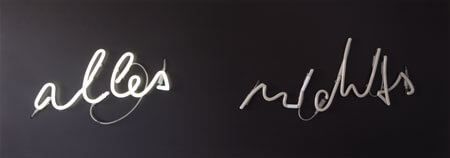

Art and Insurance – a small cultural-historical view
Art in our present perception is almost as old as humanity. Since the cave paintings of Altamira or the Venus of Willendorf people create objects. In the early days of human development, the appearance of art is one of several indicators of the formation of consciousness and human thought. Art in this context means activities or representations that do not reveal any immediate benefit to the preservation of life.
The term art in today's most frequently used sense was conceptualized mainly by Winckelmann, Herder, Goethe, Lessing and Schiller. In their aesthetic writings, they describe the human productions for the purpose of edification as art, be it in the theater, in literature, in music or the work of "visual artists", to which the term finally narrows increasingly. Thus, art - also as a prefix for word formations such as art exhibition, art auction, artwork etc. - has emerged. In the narrower sense, these are the results of targeted human activities that are not clearly defined by functions. Art is a human cultural product, the result of a creative process.
The artwork is usually at the end of this process, but in modern times it can also be the process itself. This can be chaotic, systematic, spontaneous or planned. It is not subject to any rules and we are determined solely by the skills and creativity of an artist. For Joseph Beuys, every human being was an artist, and he understood the coexistence of all as a social sculpture.
Insurance means the basic principle of collective risk transfer (insurance principle): Many pay a sum of money in the money pot 'insurance' in order to receive compensation for the occurrence of the insured event from this pot. Since the insured event will only occur to a small number of insured persons, the pot of money will suffice for an affordable contribution. The prerequisite is that the extent of the damage can be estimated statistically and can therefore be determined by actuarial methods of the contribution required of each member of the collective.
The continental legal system divides insurance law into social security law and private insurance law, which in turn covers insurance company law, insurance supervision law and insurance contract law. The idea of insurance originated in ancient times with funeral clubs. Until the 17th century, insurance coverage was provided by individuals or by guilds. It was not until the middle of the 17th century that the first insurance companies emerged. These were mainly specialized in fire and marine insurance. The first professional insurance companies were founded on government initiative. The private insurance industry has developed essentially since the 19th century. The topic of art insurance was systematically devoted to the industry only in the 1980s. It is considered one of the few product innovations in the insurance industry in the area of property and casualty insurance.
Nordstern Allgemeine Versicherung AG (1866 - 1996) has long been regarded as the world's only specialist art insurer. The beginnings were in the French branch of this enterprise, where it was kept as certain that the gap existing between the collecting and artdealing customer and the insurance world can be bridged only by the "dialogue artistique". Art experts and art historians were trained as insurance specialists. At the same time, they taught their colleagues familiar with the normal world of risk the peculiarities of art and its values.
Even today, there are reservations in the insurance industry against the development of the value of art - the value of a factory or a house can be understood and developed on the basis of indices; the determination of the value of an individual work of art eludes the majority of comprehensible criteria. The latter still leads to sustainable conflicts in the event of a claim. Art insurance also means competence in the valuation of art. Only a few companies have many years of experience in a wide variety of genres.
Art insurance is our passion - for your benefit.
